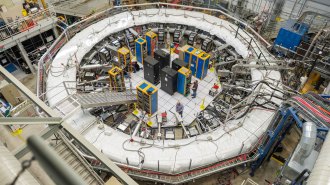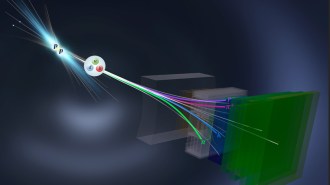A supersensitive dark matter search found no signs of the substance — yet
The LZ experiment will continue its dark matter search for about 5 years

The LZ experiment (pictured) found no evidence of hypothetical dark matter particles called WIMPs in its initial search, but it’s already the most sensitive such hunt reported.
Matthew Kapust/Sanford Underground Research Facility







